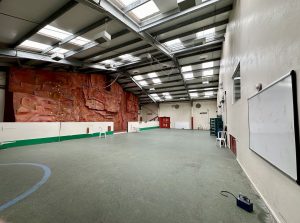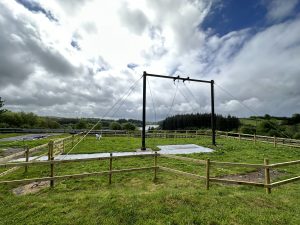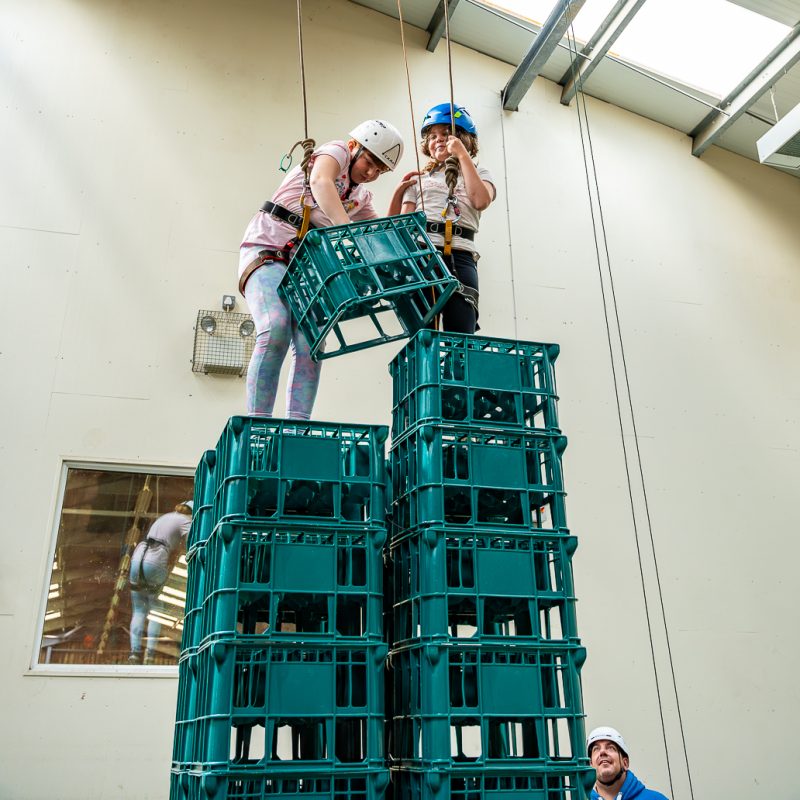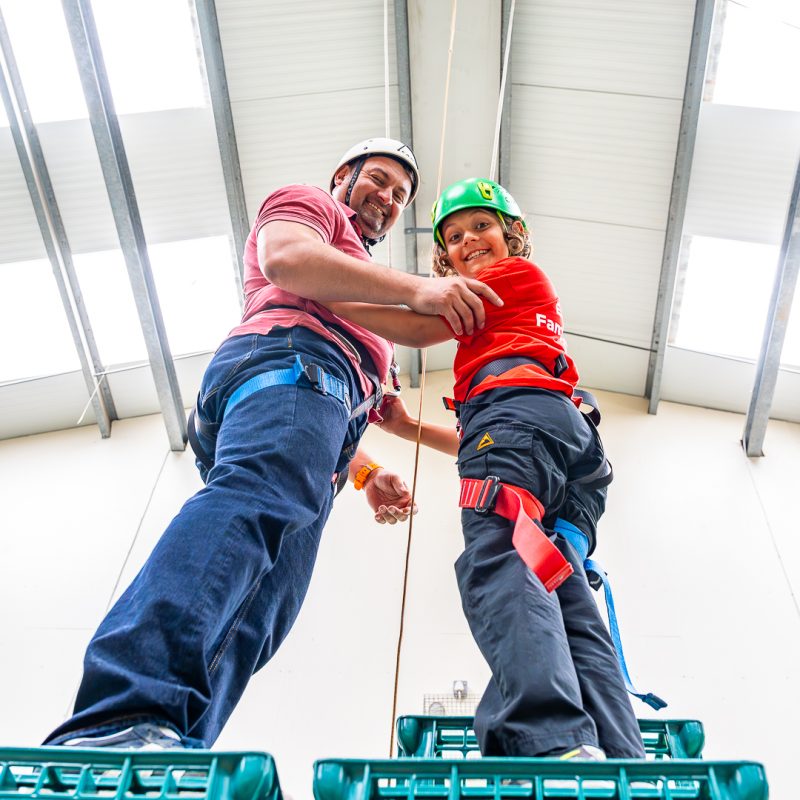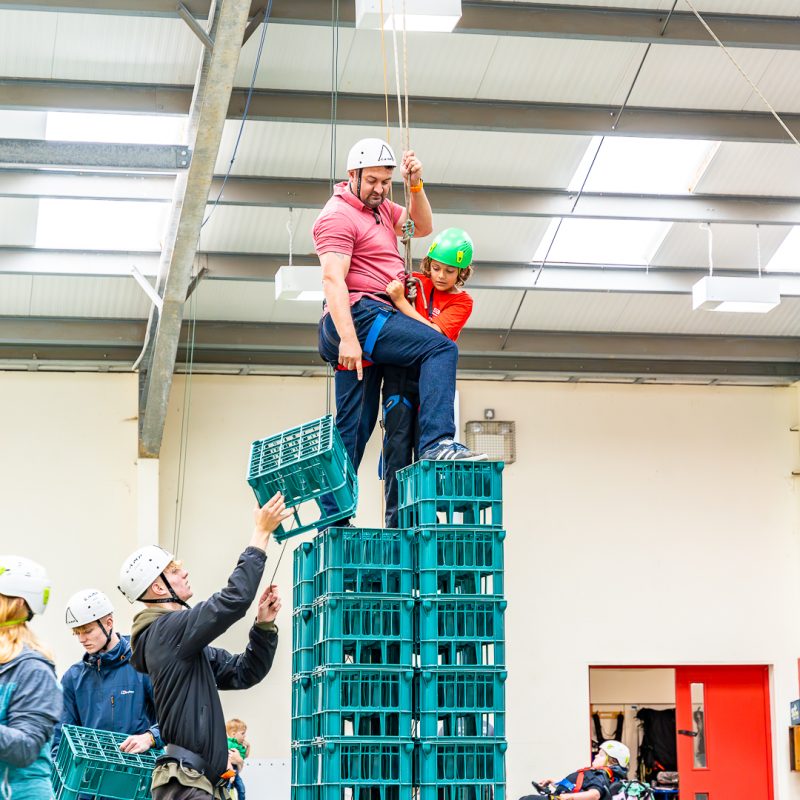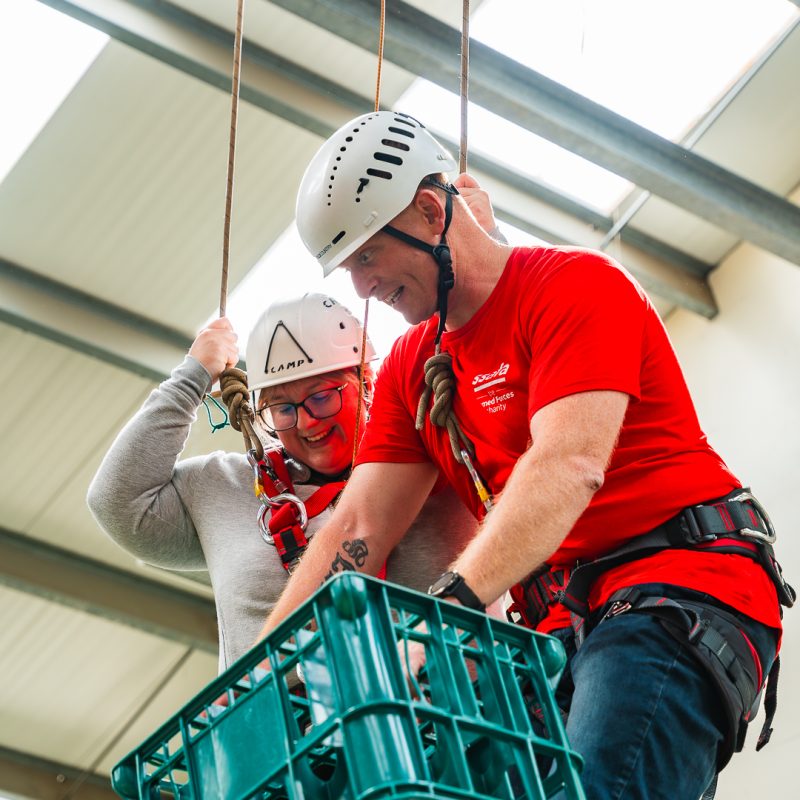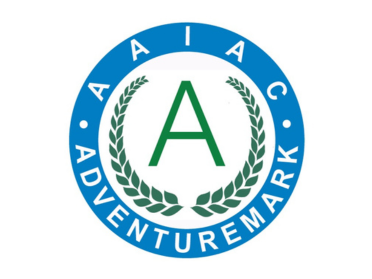Crate stack in action
Your crate stack session
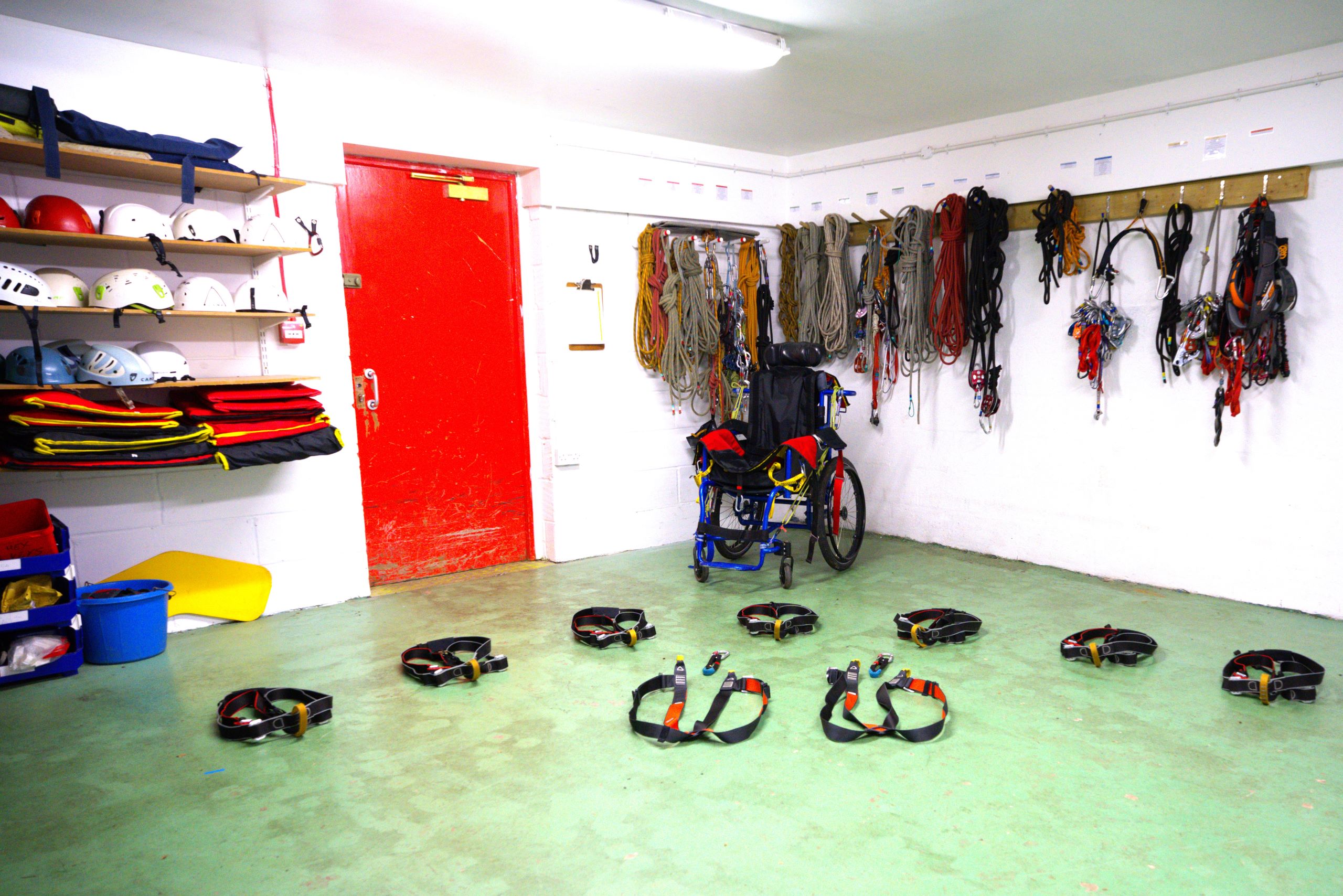
1: Get ready

1: Get ready
- You will meet your instructor at your allocated meeting point
- Your meeting point will be given to you on arrival at the centre in advance of your activity sessions
- Your instructor will take you to the equipment room to help you kit up with harnesses, helmets and any other specialised accessories needed for the session
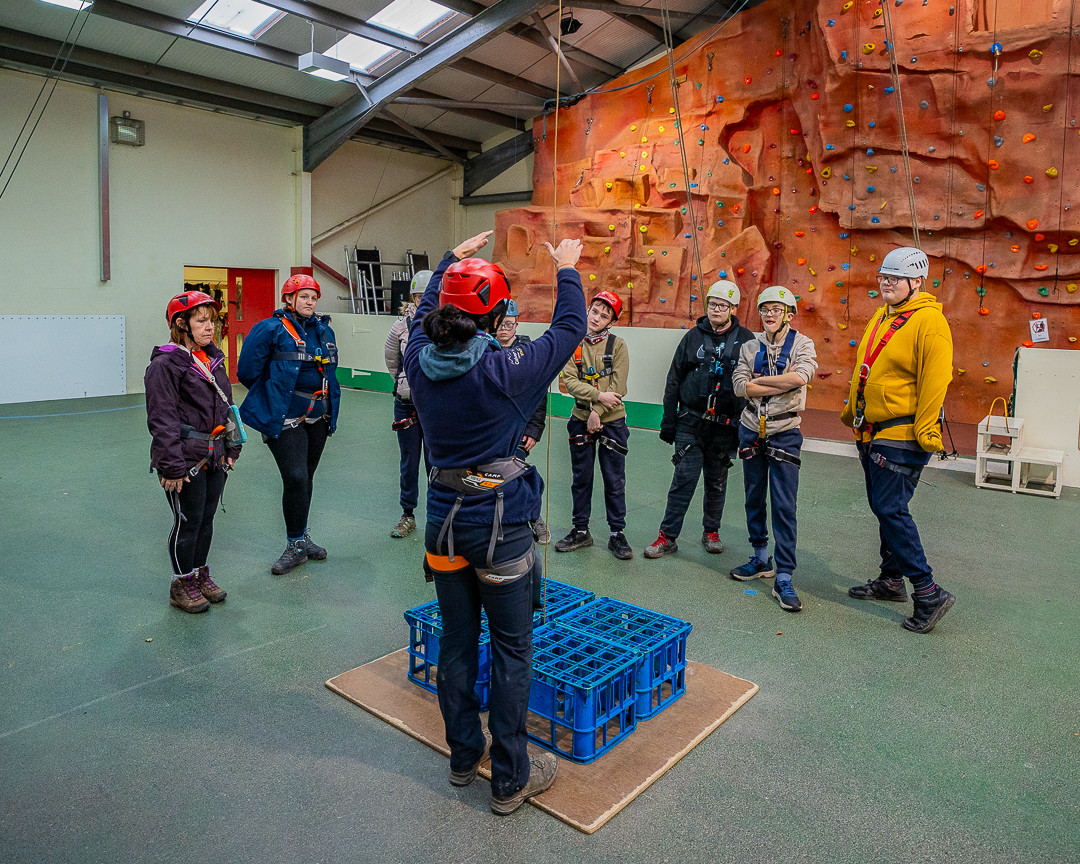
2: Learn how

2: Learn how
- Whether you’re using the indoor or outdoor crate stack area, your instructor will give you all a safety briefing before the activity starts. This will include teaching you how to use your equipment, what your team challenge involves and what to expect from the session
- Your instructor will be able to teach you techniques and answer any questions you have, as well as setting you challenges that are achievable and fun
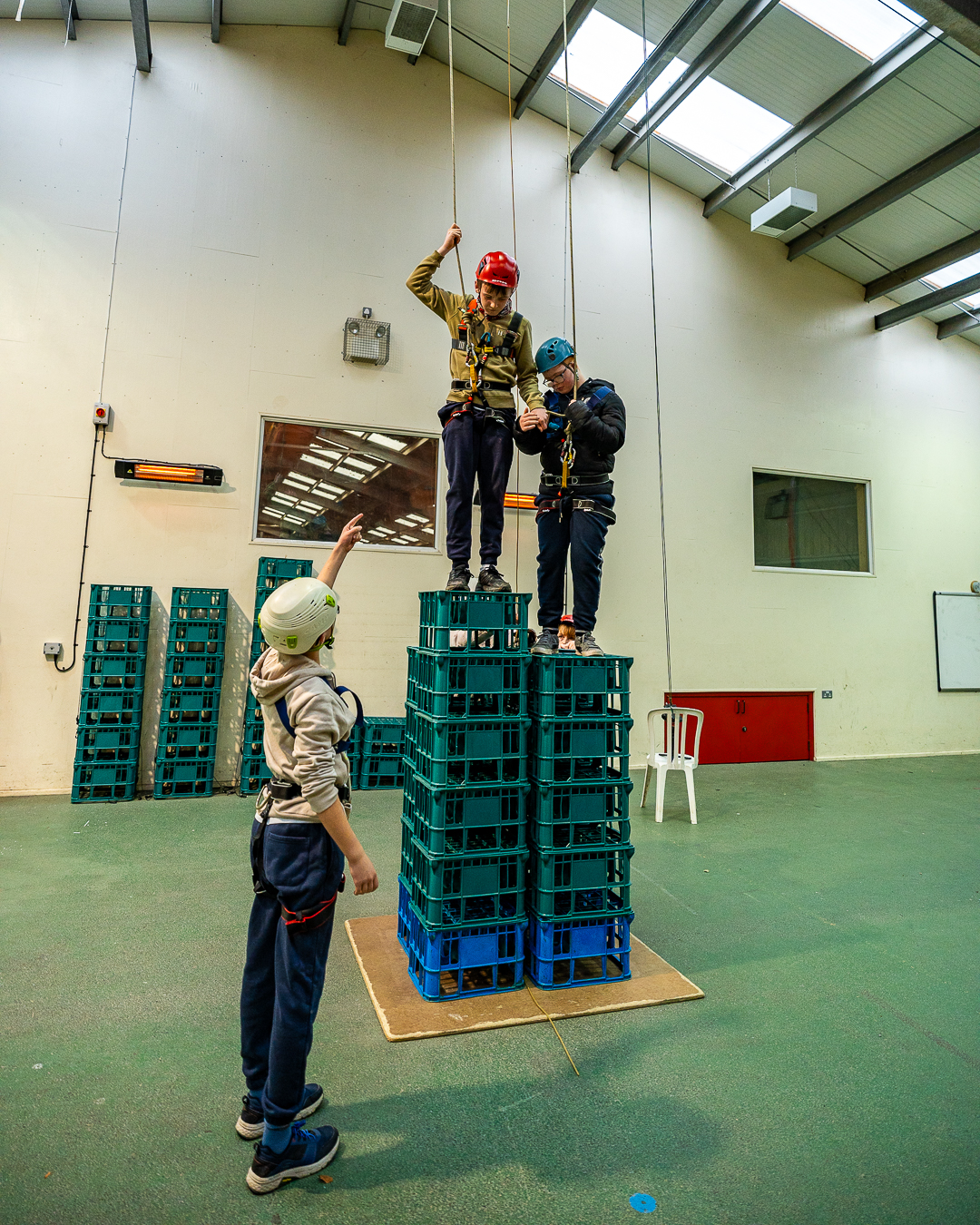
3: Have a go

3: Have a go
- During the session, as a group, you’ll take it in turns to try out each role within this activity: two of you will be on top of the crates and other group members will either be helping to pass crates up to you or assisting in belaying you to keep you safely suspended, should the tower fall
- Each pair on the crates will have a chance to build the tower as tall as possible and once it falls, they will then take on a different role within the team. This cycle repeats until everyone has had a go at each role
- Do you think you can beat the record of 21 crates? The group that managed this feat were able to do pull-ups off the roof!
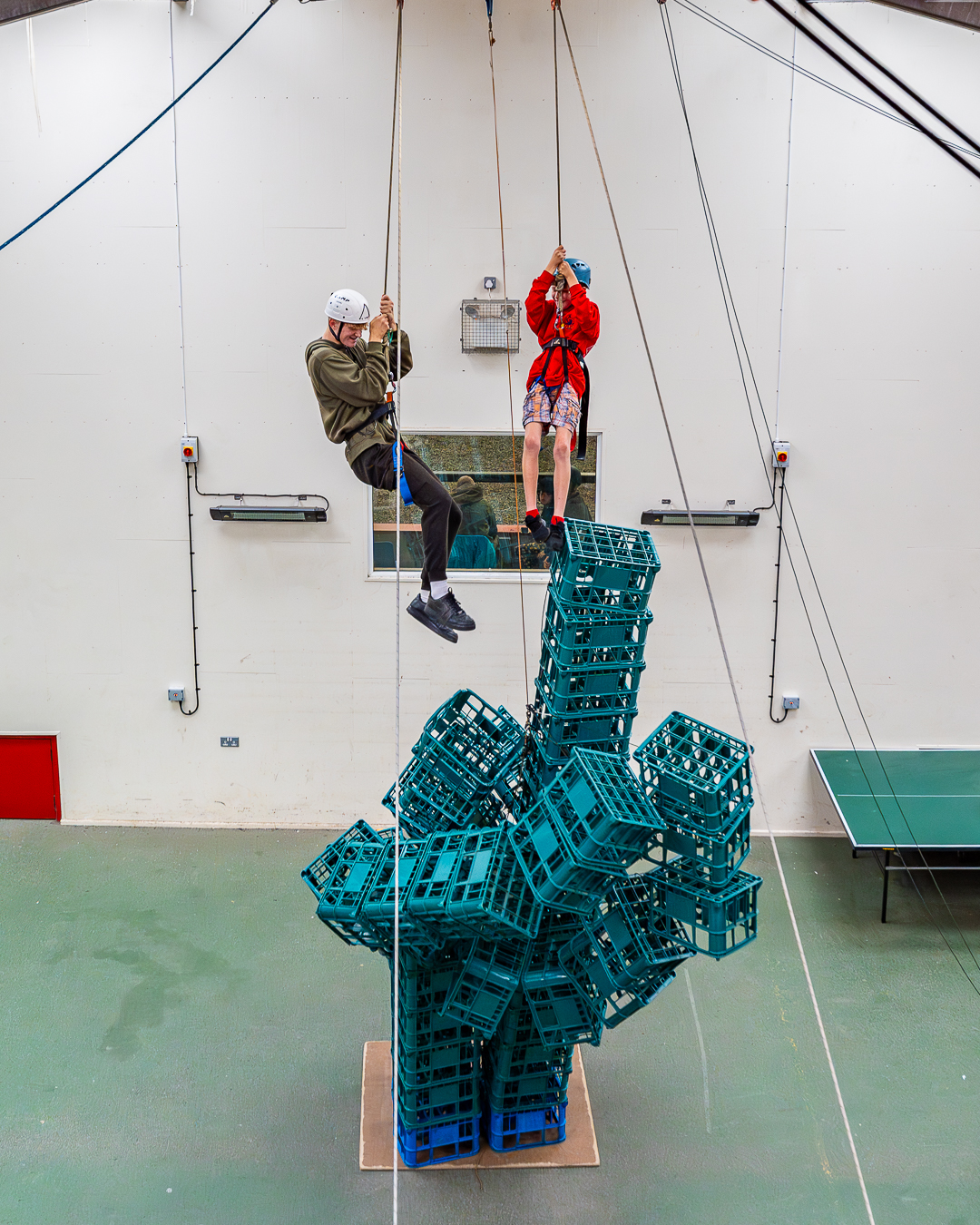
4: Finish up

4: Finish up
- At the end of your session, once you’re all safely on the floor, your instructor will remove any ropes attached to each of you and will take you to the equipment storage, where you’ll return your helmets and harnesses, before heading back to the centre
Crate stack equipment
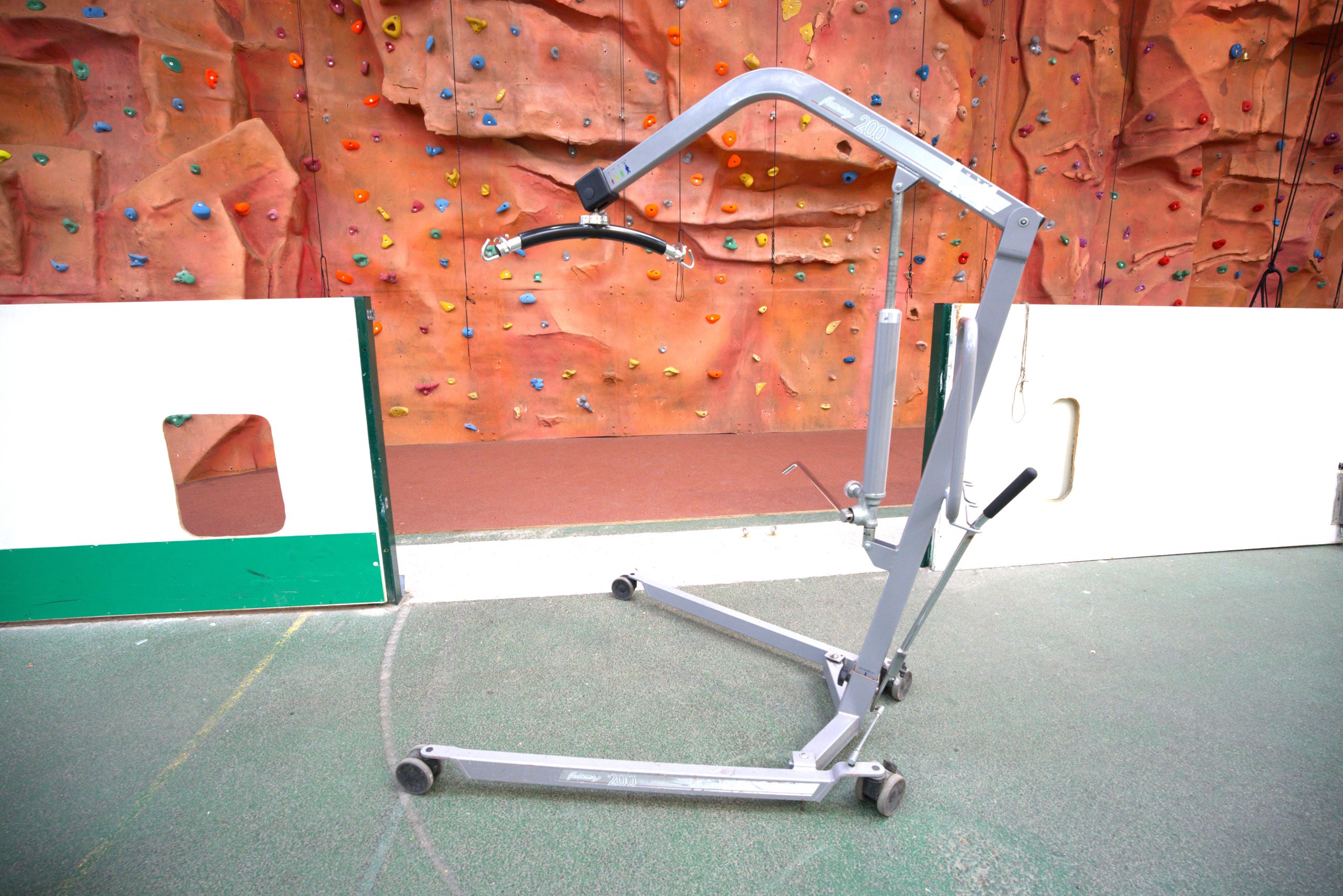
Mobile hoists

Mobile hoists
- These hoists can be used to transfer a wheelchair user from their own chair into the appropriate harness within their own wheelchair
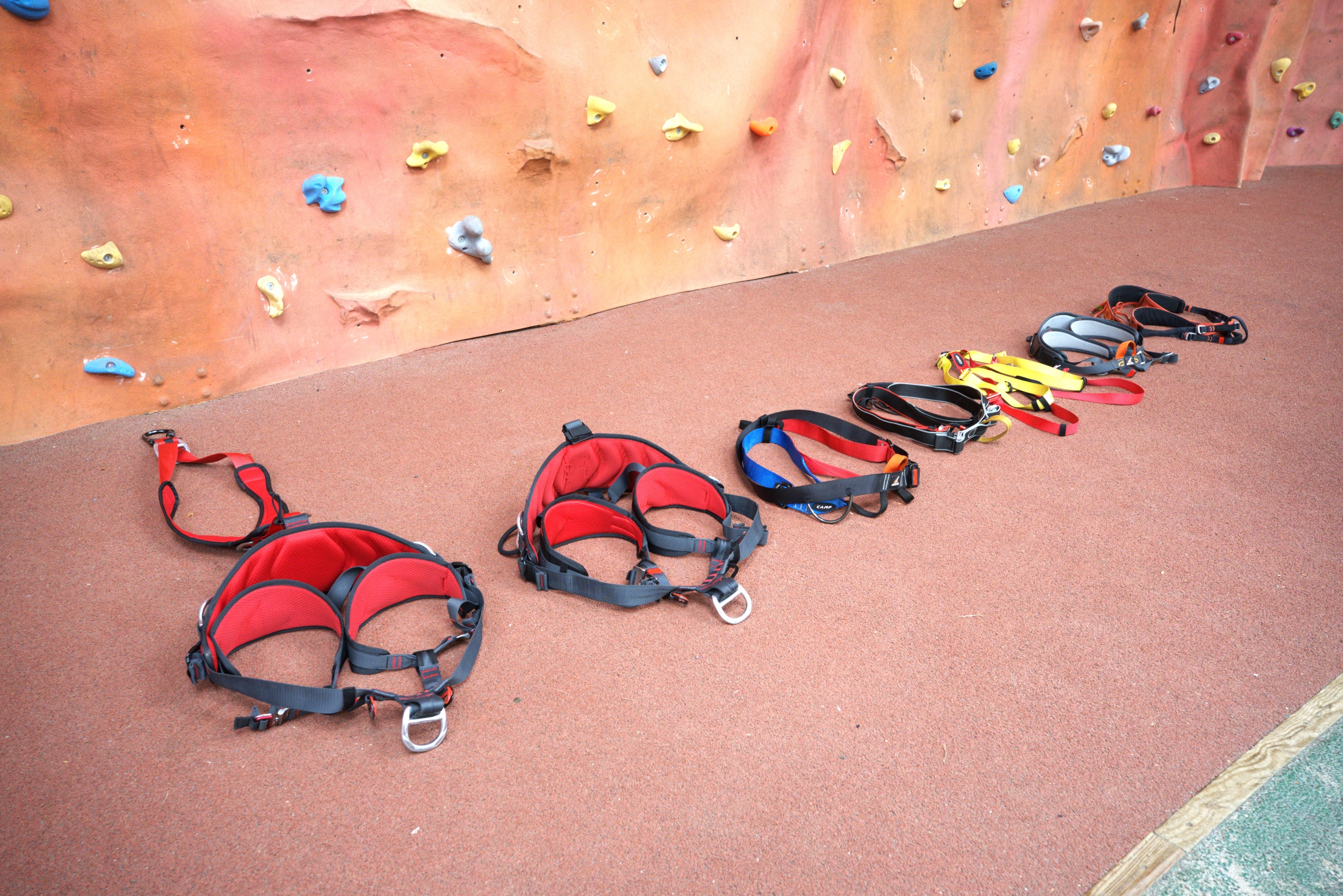
Harnesses

Harnesses
- Harnesses come in all shapes and sizes – these ones are called “sit” harnesses and are commonly used for rope-based activities
- This picture shows harnesses on the floor ready to put your feet into the smaller circles and then pull up and over your waist, like a pair of trousers
- Our instructors will help you to choose the right harness for you and show you how to put it on correctly
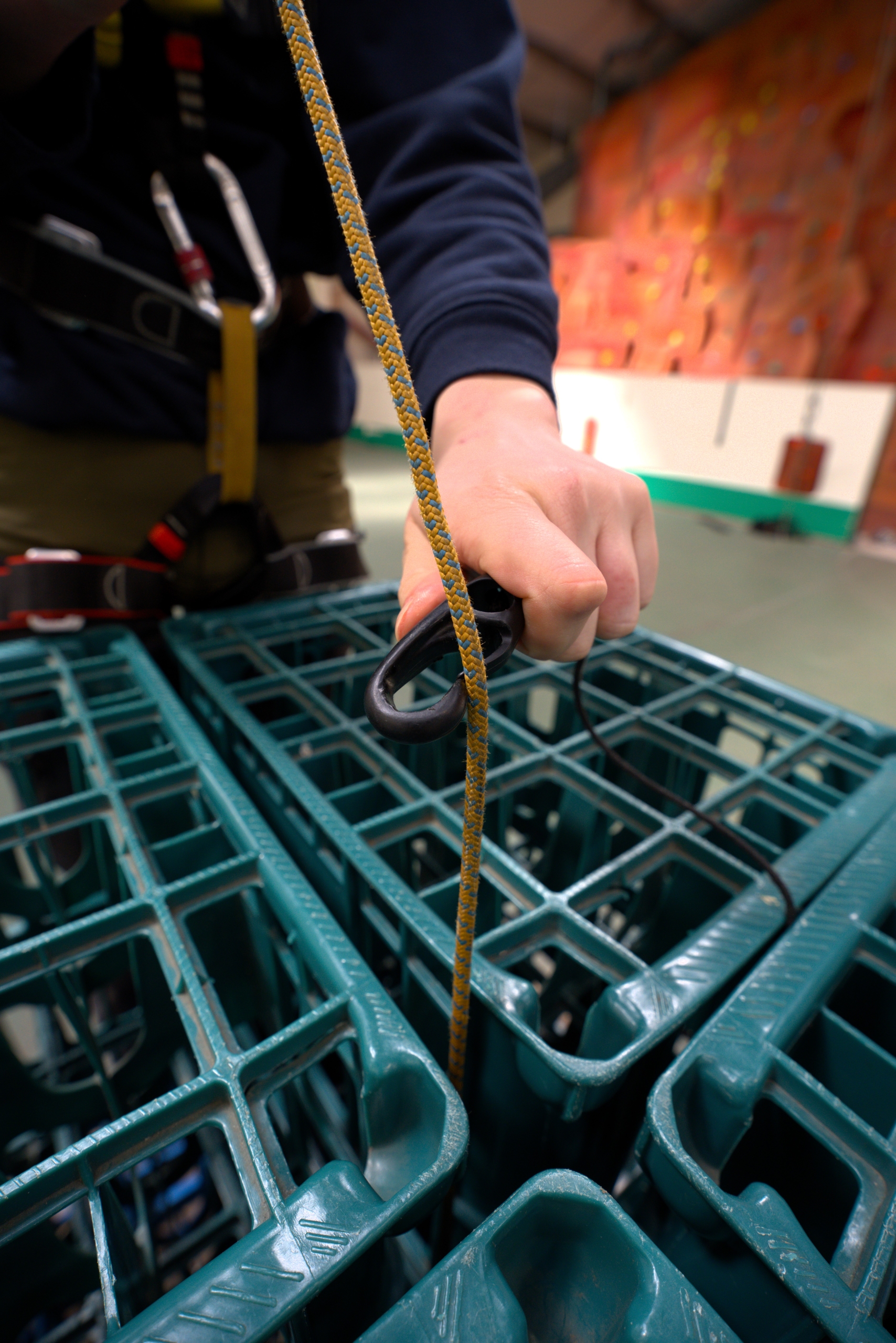
Crate Attachment

Crate Attachment
- Each crate will have a string attached to it with a little hook on the end. This is designed to attach around the central cord so that if the crate tower does collapse, the tower has a controlled fall
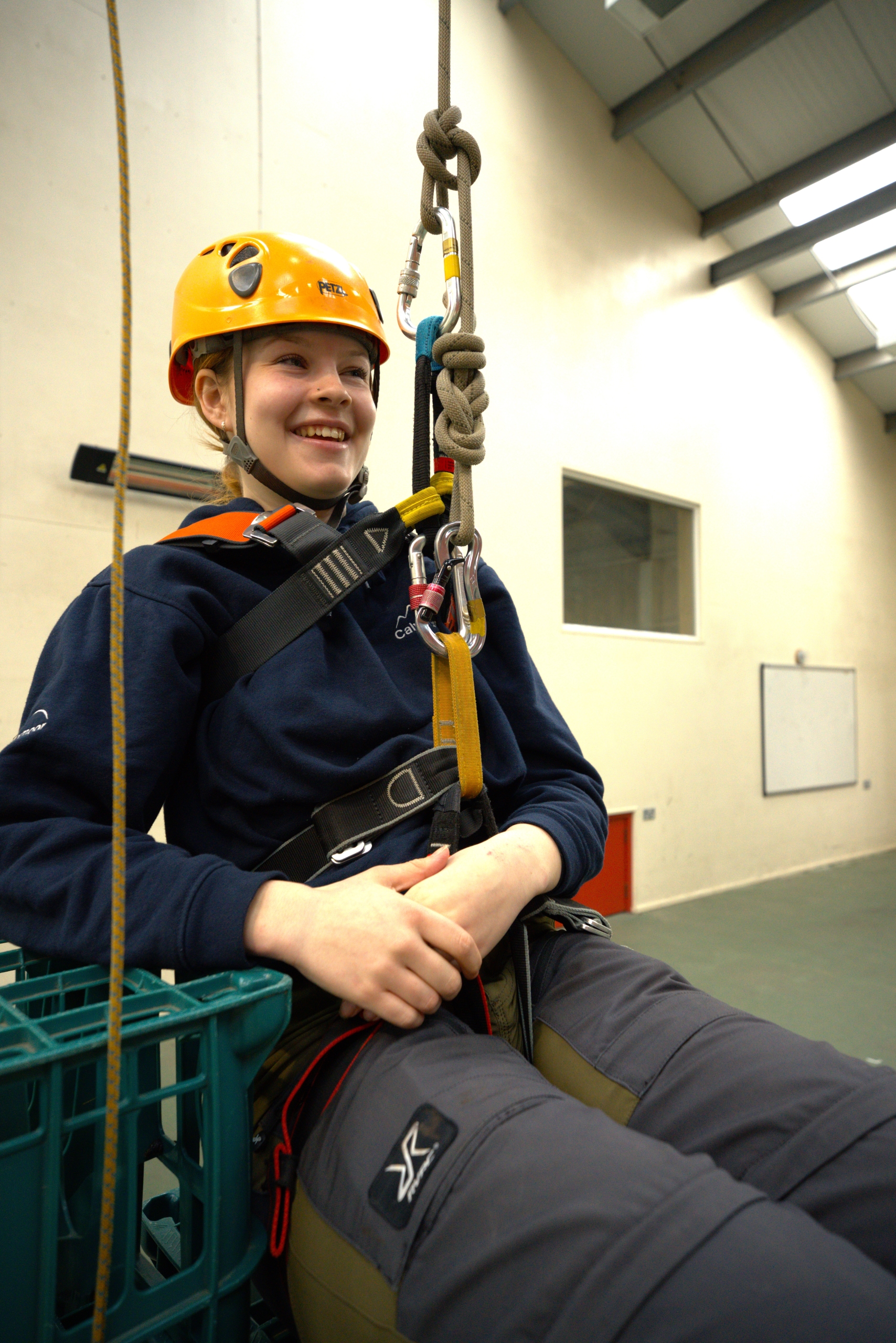
Chest Harness

Chest Harness
- Much like a “sit” harness is pulled on like a pair of trousers, the chest harness is put on like a jacket
- This harness engages around the top half of the body and attaches onto the “sit” harness, which creates a full-body support system
- This is typically used for those who are
- larger-bodied
- smaller-bodied
- lack core strength
- would simply like to feel more supported
FAQs
Yes! We leave no one out and no matter what, we do everything we can to make sure you can enjoy the experience of crate stacking in a way that suits you and keeps you safe.
At Calvert Exmoor, it’s what you CAN do that counts. Our instructors use the term ‘challenge by choice’, which ensures that while you’re taking part and given challenges along the way, you ultimately always have the agency and control over your own limitations. Our staff are there to keep you safe but also build your confidence, even if this means accomplishing a simpler version of the activity.
Every instructor has:
- extensive in-house training including observation hours logged prior to running a session independently
- Either
- a Climbing Wall Instructor (CWI) qualification including an abseil module by British Mountaineering Council
- OR
- a Rock Climbing Instructor (RCI) qualification by British Mountaineering Council
Our crate stack activity can take place either in our sports hall or outside at our newly-built outdoor crate stack area. Both of these are onsite (1-2 minute walk away from the main centre)
